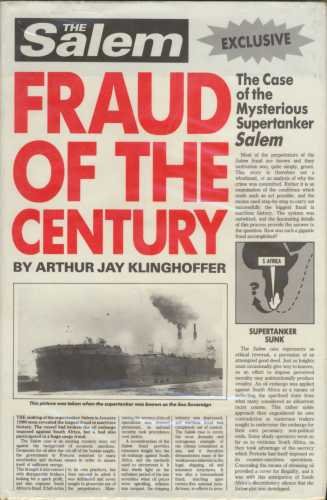|
The Salem was a crude oil tanker which on 17 January 1980 was sunk in part of a 100-million-dollar fraud off the Senegalese coast. 
On 30 November 1979 the Salem left the port of Piraeus to load oil in the Kuwaiti port of Mina Al Ahmadi, on behalf of an Italian charterer. She loaded approximately
194,000 tons of light crude oil to be discharged in Genoa. The tanker, with its cargo was insured at Lloyd's of London. She left Mina Al Ahmadi on 10 December and proceeded down the
East African coast. On 27 December under the name Lema she entered the port of Durban, South Africa. There, the ship discharged 170-180,000 tons of cargo, and took on the same
amount in ballast water in order to stay on a laden draft. She departed Durban on 2 January 1980.
On 17 January 1981, under the name Salem, she was found off the Senegalese coast in distress. The British tanker British Trident rescued the crew of the sinking tanker.
Four days after leaving the port of Mina Al Ahmadi, the charterers in Genoa sold the cargo to the Shell Group for 56 million USD. This type of transaction is not uncommon.
When the British tanker Trident, rescued the shipwrecked crew of the Salem it was observed that not only had the crew taken all their belongings in suitcases but they had
gone so far as to rescue a number of other items including duty-free goods and sandwiches. This was despite the fact that the tanker was meant to have sunk so quickly,
after several explosions, that there was not enough time to save the ship's log.
Far more striking was that, despite its ostensible cargo of nearly 200,000 tons of crude oil and having suffered sufficient explosion damage to sink, it barely left a trace.
After the loss of the Salem Lloyd's of London received an insurance claim of US$56.3 million from the owner of the ship. It was the largest single demand that Lloyd's had
received up to that time. Research by Lloyd's revealed that the South African oil company Sasol, had bought the cargo of the Lema / Salem in Durban for US$43 million.
|